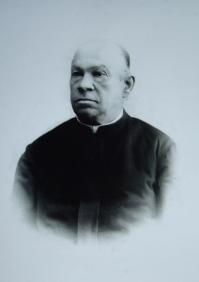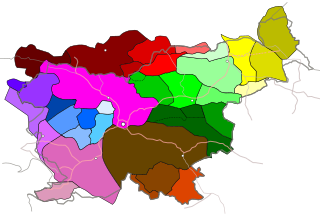
Iván Bassa Slovene Ivan Baša (11 April 1875 – 13 February 1931) Slovenian Roman Catholic priest, writer and politic.

The Slovenes, also known as Slovenians, are a nation and South Slavic ethnic group native to Slovenia, and also to Italy, Austria and Hungary in addition to having a diaspora throughout the world. Slovenes share a common ancestry, culture, history and speak Slovene as their native language.
Contents
Born in Beltinci (in Prekmurje, then part of Hungary), his parents József Bassa and Anna Vucsko. Was consecrate on 16 July 1898. Chaplain in Sankt Martin an der Raab, Sveti Jurij, Rogašovci and Rechnitz. In 1905-1908 priest in Újhegy, then in Bogojina.

Beltinci is a town in the Prekmurje region of northeastern Slovenia. It is the seat of the Municipality of Beltinci.

Prekmurje is a geographically, linguistically, culturally and ethnically defined region settled by Slovenes and a Hungarian minority, lying between the Mur River in Slovenia and the Rába Valley in the most western part of Hungary. It maintains certain specific linguistic, cultural and religious features that differentiate it from other Slovenian traditional regions. It covers an area of 938 km2 and has a population of 78,000 people.

Hungary is a country in Central Europe. Spanning 93,030 square kilometres (35,920 sq mi) in the Carpathian Basin, it borders Slovakia to the north, Ukraine to the northeast, Austria to the northwest, Romania to the east, Serbia to the south, Croatia to the southwest, and Slovenia to the west. With about 10 million inhabitants, Hungary is a medium-sized member state of the European Union. The official language is Hungarian, which is the most widely spoken Uralic language in the world. Hungary's capital and largest city is Budapest. Other major urban areas include Debrecen, Szeged, Miskolc, Pécs and Győr.
Bassa was befriend Yugoslavia and the accession Wendic March (Prekmurje on the State of Slovenes, Croats and Serbs. After 1920 be at the back of the catholic Hungarian schools in the Prekmurje. In 1925 build a new church in Bogojina.

Yugoslavia was a country in Southeastern and Central Europe for most of the 20th century. It came into existence after World War I in 1918 under the name of the Kingdom of Serbs, Croats and Slovenes by the merger of the provisional State of Slovenes, Croats and Serbs with the Kingdom of Serbia, and constituted the first union of the South Slavic people as a sovereign state, following centuries in which the region had been part of the Ottoman Empire and Austria-Hungary. Peter I of Serbia was its first sovereign. The kingdom gained international recognition on 13 July 1922 at the Conference of Ambassadors in Paris. The official name of the state was changed to Kingdom of Yugoslavia on 3 October 1929.

The State of Slovenes, Croats and Serbs was a political entity that was constituted in October 1918, at the end of World War I, by Slovenes, Croats and Serbs resident in what were the southernmost parts of the Austro-Hungarian Empire. Although internationally unrecognized, this was the first incarnation of a Yugoslav state founded on the Pan-Slavic ideology. Thirty-three days after it was proclaimed, the State joined the Kingdom of Serbia to form the Kingdom of Serbs, Croats and Slovenes.











